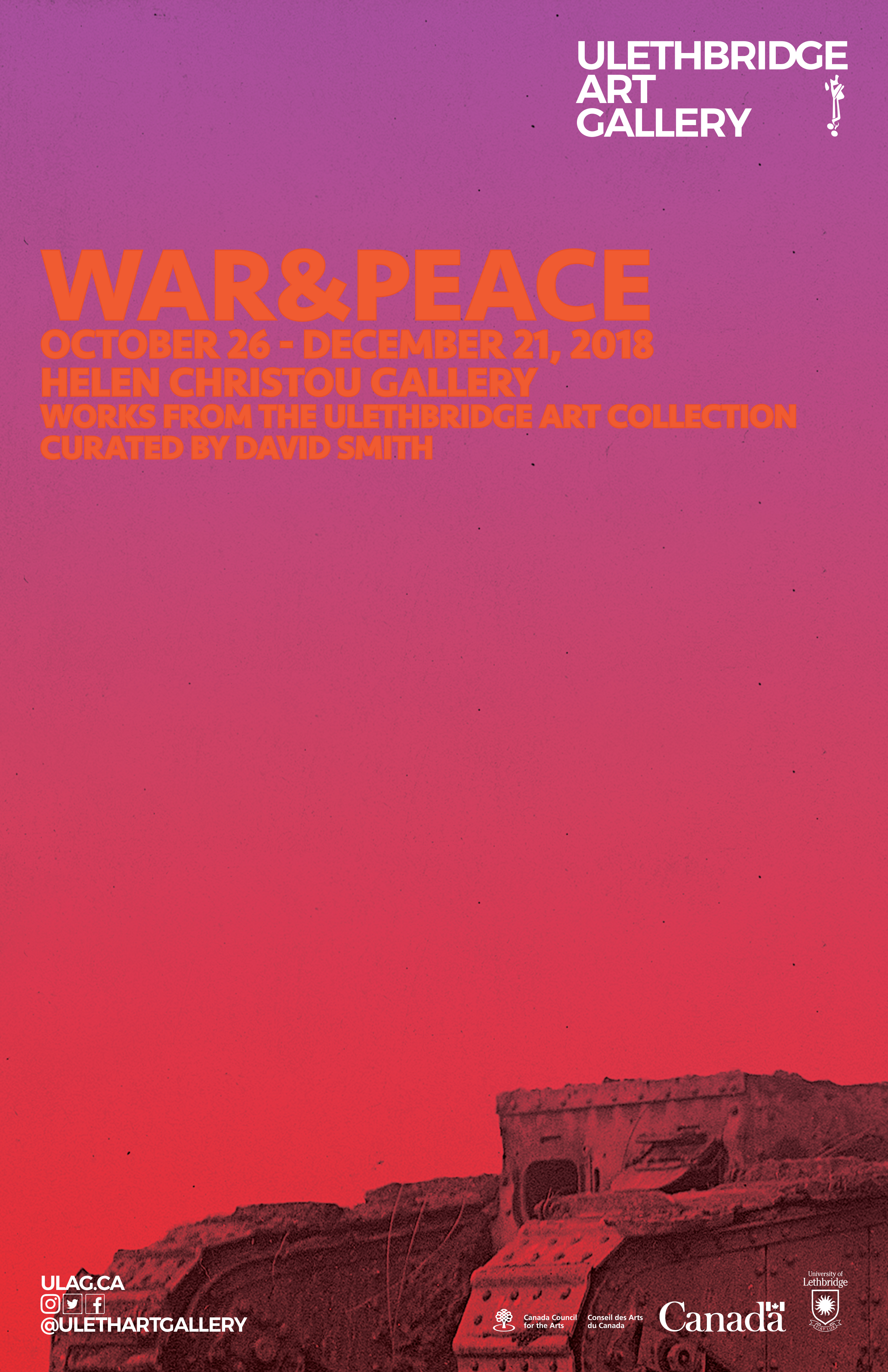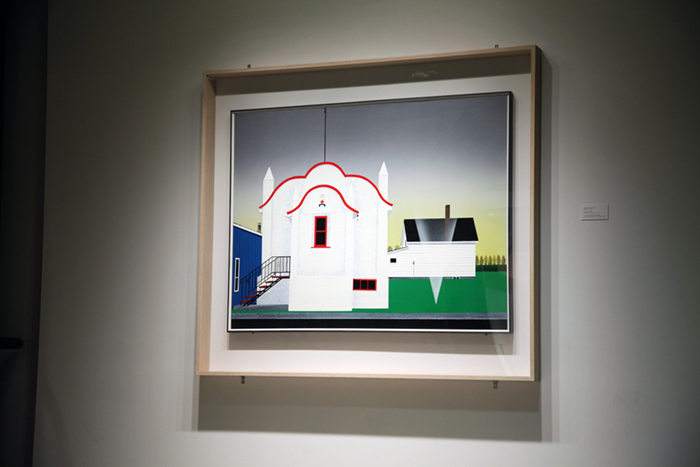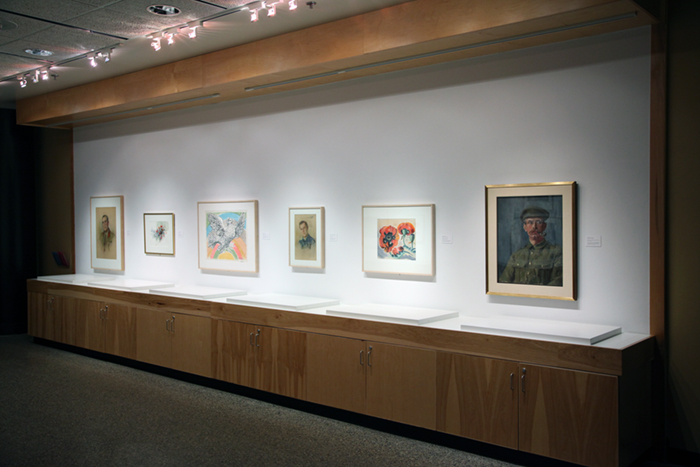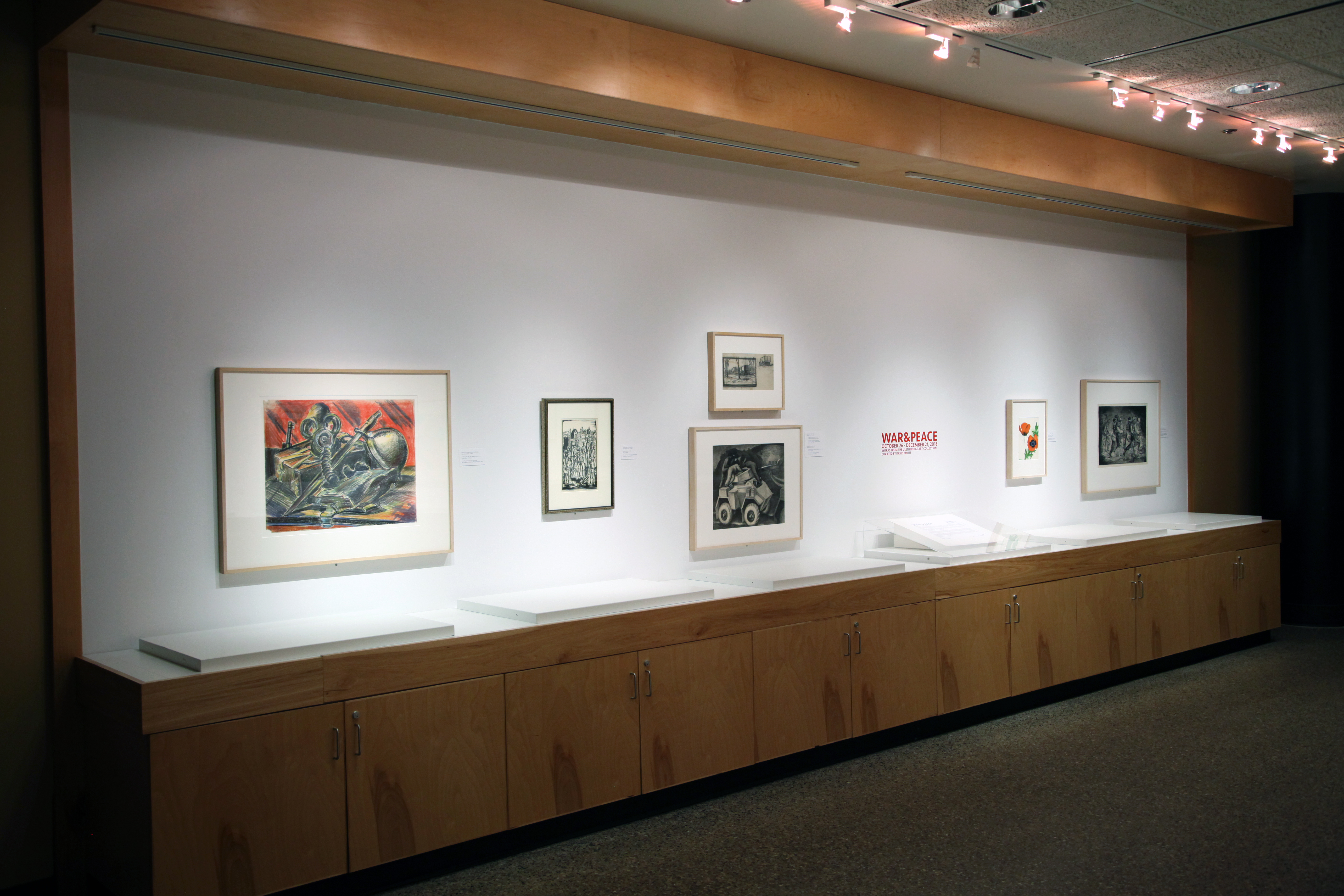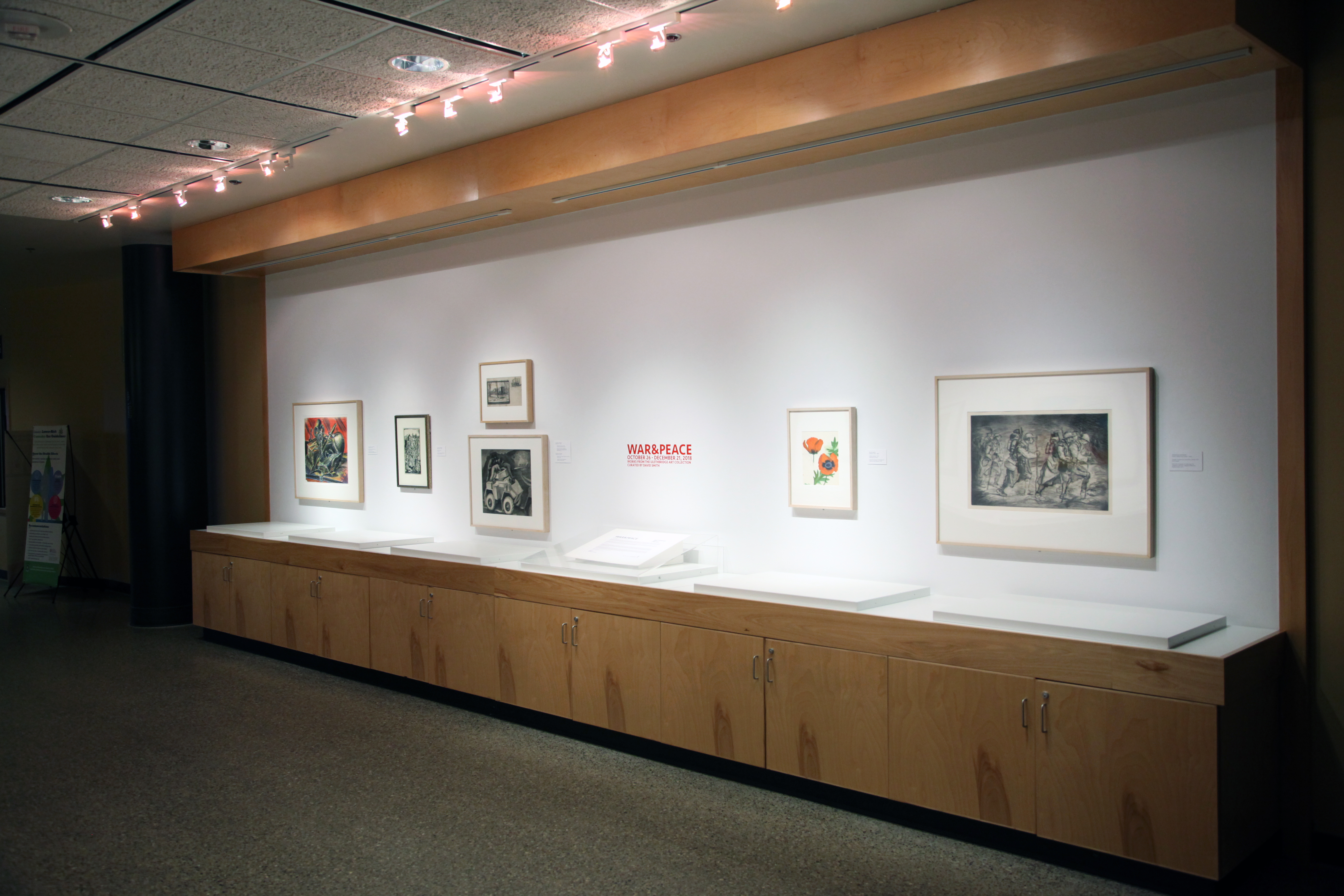Helen Christou Gallery
War & Peace
October 26 – December 21, 2018
Curatorial Statement
War doesn’t determine who is right – only who is left.
– Bertrand Russell
November 11th, 2018 marks the centenary of the end of the First World War. A hundred years later, it’s worth reflecting on the legacy of war in this country. It is important to recognize that this history of war in North America predates Confederation, but even in the 151 years since, the losses that Canada has suffered and continues to suffer are significant. In the Memorial Chamber in the Peace Tower at the Canadian Parliament buildings in Ottawa are seven Books of Remembrance which honour those who have been killed on active service in wartime or other conflicts. Collectively, the books contain the names of 117,616 Canadians. The last book is a living document and records the fatalities that have occurred since October 1947, besides those recorded in the Korean War book, and currently has more than 1,800 names listed.
In this exhibition, the portraits by Nicholas de Grandmaison and Augustus John pay respect to the named and unnamed soldiers that have served their country. The glowing patriotism in de Grandmaison’s two portraits are perhaps countered by the serious and troubled expression worn by the sitter in John’s Portrait of a Canadian Soldier, 1918. In Bartley Pragnell’s Untitled (still life: war paraphernalia), n.d. we see a jarring arrangement of unsettling objects which leave us with more questions than answers. Do these items belong to a fallen soldier or perhaps a veteran? Have they been taken as war booty? We’ll likely never know.
The best way to solve problems and to fight against war is through dialogue.
– Malala Yousafzai
Canada also has an international reputation for commitment to peace and has contributed to 37 peacekeeping missions since 1947. This year, Canada made a commitment to contribute up to 250 troops, and four helicopters to provide medical evacuations and aerial support in the ongoing United Nations peacekeeping mission in Mali. This is Canada’s most significant contribution to peacekeeping in the last two decades. Since the mission began in 2013, at the time of writing this text, there have been 173 fatalities. UN peacekeeping missions are guided by three principles: consent of the parties, impartiality, and non-use of force except in self-defense. Clearly the road from conflict to peace can be a tumultuous journey and Canadians can be proud of the peacekeepers who work in dangerous and difficult environments and risk their own lives trying to protect some of the world’s most vulnerable people.
After living through both World Wars, the Spanish Civil War and the Korean War, Pablo Picasso had a unique perspective on peace. While he explored the themes of war in some of his most famous works like Guernica, 1937, after World War II he began to become active in the promotion of world peace. In 1949, his work The Dove (La Colombe), became the poster image for the Paris Peace Congress the same year. Throughout the 1950s, Picasso produced variations on the dove theme. The print in this exhibition Colombe volant (à l’Arc-en-Ciel), 1960, belongs to this body of work. In October 1952, the dove was drawn onto the lithography stone but no print edition was made at this time. In May 1960, Picasso returned to the stone and added the coloured background layers and it was finally printed in an edition of 200 prints and 38 proofs. This image was also used on a poster to promote the 1960 Paris Disarmament Summit Conference which in the end did not come to fruition.
The real and lasting victories are those of peace, and not of war.
– Ralph Waldo Emerson
– David Smith, Preparator / Assistant Curator
